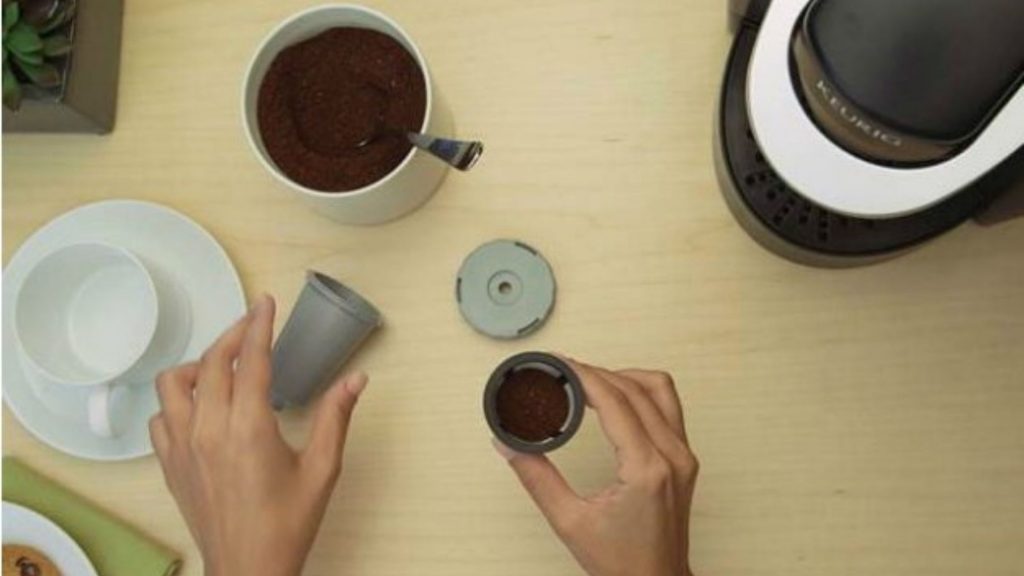How to clean a Keurig so you can continue enjoying the best coffee
We use The Keurig coffee machines with comfortable feelings because it has become a common device in homes and offices. There is nothing like placing a K-Cup and get fresh coffee. The machine has even inspired similar products for different types of food and drink. However, there are times when it gets a bit frustrating when it gets clogged by dirt or lime, so knowing how to clean a Keurig is important.
Lime can be particularly annoying. The water has trace amounts of minerals, which react at high temperatures, binding to nearby surfaces. As this happens over and over again, a limestone-like layer builds up. This causes your Keurig to reduce the flow of water, preventing it from filling a cup properly and can eventually block it completely.
To avoid these inconveniences, unpleasant odors, mold, and ensure that your coffee maker is working properly, it is important to clean it. For this reason, we created a quick guide on how to clean a Keurig, where we will show you the best way to do it, where to start and what materials to use.
To know about-How to open Keurig
Step 1: Wash and clean the tank and other removable parts of the Keurig Coffee maker machine
Start by unplugging your Keurig. Next, remove all removable components, including the water reservoir, the cup/drip tray holder, and the K-Cup holder inside the coffeemaker. Take them to the sink and wash them with soap and water, just like ordinary dishes. Let them dry while you work on other components.
This is also a good time to grab a cloth or paper towel and give your entire Keurig a good clean. Your coffeemaker, especially in places like offices, can collect a lot of dust. And you don’t want that dust to mix with your freshwater or coffee. So you know that it’s a good idea to give the surface a general cleaning.

Step 2: Clean all the cracks
With a small cleaning brush (this can also be a toothbrush) and a pin or paperclip, you can give the other components of your Keurig a deep clean. Besides, you can think that it may seem like an unnecessary step. But it is important to ensure the purity of the water and the quality of the coffee. Over time, sand and dirt can build up in the cracks, causing clogs and affecting taste. Get rid of that detritus (organic waste) to improve durability and performance.
Start by cleaning everything around the K-Cup mount housing. Different models have slightly different insertion methods, but the concept is the same. Use the brush to clean around the pod holder and deep corners. Lost sand and coffee residues tend to accumulate in this area. You will be happy to get a flashlight or good lighting that can be helpful in this step. You can also use water or a cloth, but avoid using soapy water.
When you are done with the steps, with a pin or paperclip and examine the components that go into the K-Cup. There should be a small hole in each “prong” for the hot water/coffee to pass through. Insert the pin through that hole and wiggle it to loosen any caked debris. If your Keurig has been running slowly, it could be due to a clog in these holes. Keurig also offers cleaning needles.
Step 3: Add vinegar and make it work
The third step in this guide on how to clean a Keurig may surprise you. Since many components are inside the coffee maker, there is a way to clean them without having to dismantle the entire machine: ordinary kitchen vinegar. It is acidic enough to remove scale build-up but is harmless to the rest of the brewer. Take the water reservoir and fill it with a solution of half white vinegar and half water. Put it on the Keurig base, place the rest of the components. Time to make some hot vinegar.
Turn the Keurig on to its normal setting and begin filling cups with the vinegar mixture until it is completely gone. This will not be very pleasant, but it is not harmful to your Keurig, and it will help remove any accumulated tartar or dirt. A clog may form during this descaling process. If it does, open the top and use your pin to pry open the holes and dislodge any particles that may have been trapped.
For a complete cleaning, it would be a good idea to use two tanks filled with half vinegar, half water. If your Keurig is still in good shape or doesn’t have a lot of use, a single full tank will work just fine.
Note:
Keurig sells its own descaling solution. It is easy to find White vinegar. However, it is cheaper and easier to use. Also, the Keurig solution uses citric acid as its active ingredient and there are some complaints that the smell and taste linger for a long time. There are also a number of other manufacturer’s products on the market, such as “cleaning cups” and “rinse pods,” but we do not recommend them. As you may have seen in these tips on how to clean a Keurig, vinegar does the same job and for less money.
To read also-best coffee maker under 100
Step 4: Stir the vinegar with water
Obviously, you don’t want the vinegar to remain in your Keurig, so fill the tank with fresh water and turn your coffee maker back on to remove any residue. Make sure it passes the smell test. Once you’re done, your Keurig’s performance should improve and the lime issues should have literally dissipated.
We suggest repeating this cleaning consistently, especially if your Keurig has a lot of use. Depending on your water source, Keurig recommends descaling it at least once every three to six months. Remember that you are more likely to have a problem with hard water than with soft water. If you have recurring problems with limescale, you could use filtered or bottled water instead of tap water.
Bonus Tip: Replace Your Filter Cartridge
Some Keurig models come with filters that are part of the water tank. If your Keurig has one of them, you should replace it every once in a while, every 60 tanks or so. These filters can improve flavor, but they can also help make clogs and other problems less recurring.
In addition to knowing the process of how to clean a Keurig, consider that coffee can make a big difference if you use bottled or fully filtered water instead of tap water (which is also a good idea if your unit doesn’t have a filter). However, this could be a more expensive option.
